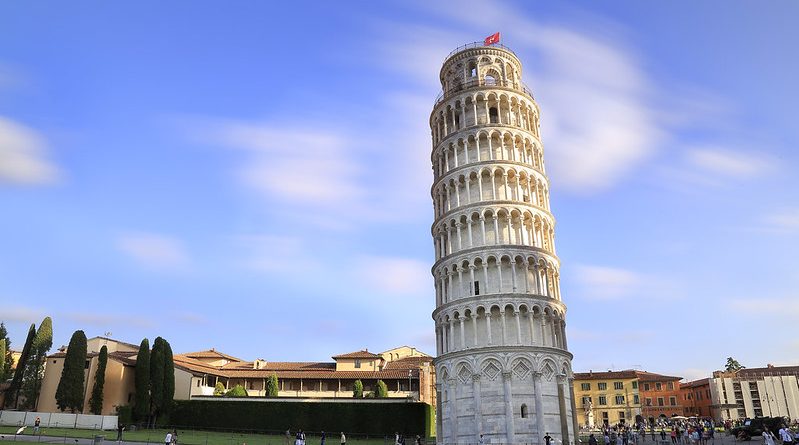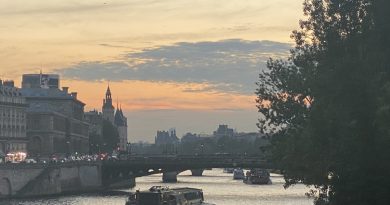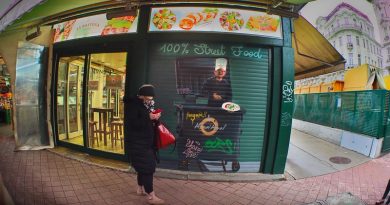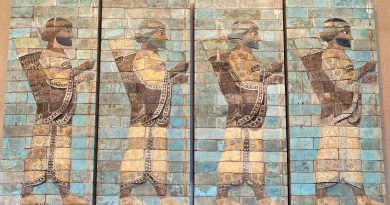The Riddle of the Leaning Tower
History Facts
Where: Pisa, Italy
When: 12th century
History: Strangely skewed elegant tower which has managed to stay standing for 800 years
Go there for: A curious slant on the world
The Leaning Tower of Pisa is the bell tower of the Cathedral. It has become renowned the world over for its peculiar inclination, but even without it’s famous fault the Leaning Tower would still be one of most remarkable architectural structures in Europe.
Although the original architect (who’s identity remains a mystery) designed the tower to be vertical, a lean was first detected very early into the construction. Nonetheless, it has so far survived over eight centuries and procedures are underway to preserve the besieged Tower for future generations.
What’s the history here?
In the 12th century Pisa was a wealthy city, which had enjoyed a succession of military triumphs and was busily building monuments to its achievements. A widow named Berta di Bernardo left 60 coins in her will for the purchase of stone to build a bell tower in 1172. Construction began the following August, but took almost two hundred years to complete.
By 1178 the third story was complete. It was observed at this stage that the tower was leaning to the North, but construction was on hold until 1275 due to wars with neighbouring provinces. By this time the tower had shifted of its own accord and was now leaning to the South. A further three floors were added perpendicular to the ground, rather than following the original tilt of the lower levels. Again, construction stopped until 1319, when the last two stories were built. The bell was finally placed at the top of the tower in 1350, completing the beleaguered bell tower but giving rise to centuries of contemplation about how to stop the Tower from toppling.
A total of 17 attempts to correct the Tower’s curious lean have been made over the centuries, but most have actually aggravated the sorry situation. The Tower shifts a further 1.2 millimetres from the vertical every year, and without action it is certain that the Tower will eventually topple.
When, in 1989, the Pavia Cathedral collapsed, killing four people, the authorities finally realised that it was unsafe to permit tourists to climb the Tower of Pisa. A committee of engineers and art historians began figuring out ways to forestall the Tower’s collapse. First, they encircled the lower levels with a steel band to prevent it from buckling under the uneven weight from above. Next, in 1993 they placed 600 tonnes of lead on the North side of the base to act as a counter-weight. This measure stopped the progression of the lean in its tracks for several years. Finally, in 1995 the committee planned to dig a trench around the base of the tower and create new foundations out of cement. This latest attempt almost spelled disaster for the troubled Tower, as the Committee was unaware that it was resting on foundations built 30 years before the rest of the Tower, some of which were accidentally removed when the trench was dug out. The Tower shifted 2.5 millimetres overnight and the engineers were forced to take emergency measures to stop the Tower from falling down: they placed another 230 tonnes of lead on the North side of the base.
Since 1995, no further attempts have been made to save the tower. Some outlandish proposals have been made, such as attaching a helium balloon to the North side of the Tower, and the debate has been met with controversy from some quarters. The Committee’s latest plans have not yet been finalised, but they remain confident that with careful attention the beloved landmark and Pisa’s most famous tourist attraction will remain standing for a few more hundred years yet.
What’s there to see and do?
Although tourists can no longer climb the Leaning Tower, the spectacle still attracts huge numbers of visitors each year. Pisa itself offers all the amenities of a modern city and in thePiazza dei Miracoli, where the Tower is situated, there are several other buildings of historic interest:
– The Duomo (Cathedral), of which the Tower is the bell tower, was built in the late 11th – early 12th centuries.
– The Baptistry is an imposing circular building dedicated to St. John the Baptist and began in the 12th century in the Gothic style.
– The Camposanto, an inspiring backdrop to the Piazza. Alledgedly the earth at the centre of the cloister was brought back from the Holy Land in the 13th century by Pisan galleys.
– The magnificent hills surrounding Pisa offer some spectacular walking and a number of picturesque villages can be visited in a day-trip from the city.
– Pisa is not far from the coast, and at the resort of Tirrenia you’ll find all the attractions of a seaside retreat.
MORE INFORMATION
The Official Website of the Leaning Tower
A detailed history of the Tower, pictures and outlines of further plans to save it.
Pisa Online
Comprehensive guide to the city of Pisa and the surrounding area, in English and Italian.
By Jess Halliday




